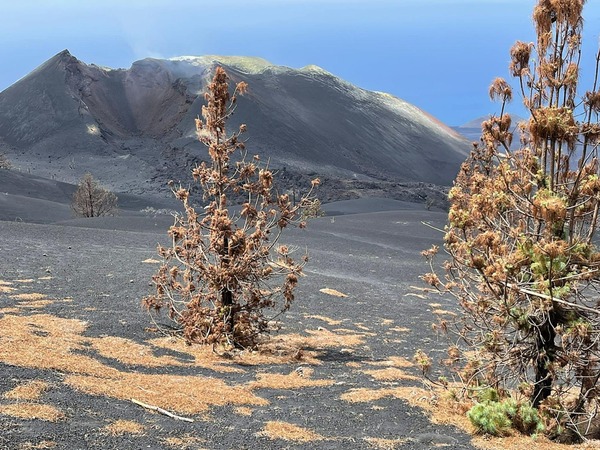Impact of Volcanic Sulfur Emissions on the Pine Forest of La Palma, Spain
2 Consejería de Medio Ambiente, Cabildo Insular de La Palma
3 Island Ecology and Evolution Research Group, Institute of Natural Products and Agrobiology, Spanish National Research Council, La Laguna, Canary Islands, Tenerife, Spain
4 Disturbance Ecology, University of Bayreuth
5 Geoinformatics-Spatial Big Data, University of Bayreuth
6 Department of Geography, University of Bergen
7 Área de Medio Ambiente, Gestión y Planeamiento Territorial y Ambiental (Gesplan S. A.), Canary Islands, Tenerife, Spain
P 6.24 in Posters
During the eruption of the volcano Tajogaite on the island of La Palma, Spain, in 2021, large amounts of tephra and volcanic gases were deposited on the surroundings. We combined in-situ data and remote sensing analysis to investigate the impact on the Canary Pine forest, monodominant stands of the endemic Pinus canariensis. P. canariensis is well adapted to the disturbance regime on the island, especially to frequent wildfires. During and after the eruption, the species showed widespread chlorotic damage and immediate resprouting. Many trees resprouted up to four times in the first 6 months after the eruption due to continuous needle loss.
We detected chlorotic damage to the forest canopy in a radius of 7 km around the crater, with damage intensity significantly related to distance. Overall, 10% of Canary Pine forest area on the island were affected. Needle samples were analysed on their sulphur (S), carbon (C) and nitrogen (N) levels. S levels were elevated close to the crater, with a strongly distance related pattern. C levels were lower in needles with high S levels. likely due to the translocation of C as a building block during resprouting. N showed a less clear pattern, likely due to a multitude of environmental factors influencing N.

Resprouting individuals of Pinus canariensis close to the crater of the volcano Tajogaite on La Palma.


